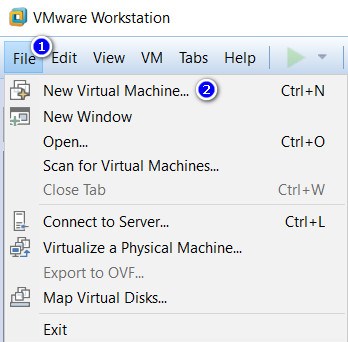

For infrastructures exceeding the aforementioned limits we recommend an installation of OpenNebula from scratch on a bare-metal server, using the vCenter drivers. Take into account that vOneCloud is shipped for evaluation purposes. Up to 100 users, the limit being 10 users accessing the system simultaneously Up to 1.000 VMs in total, each vCenter managing up to 250 VMs VOneCloud ships with a default of 1 vCPUs and 2.5 GiB of RAM, and as such it has been certified for infrastructures of the following dimensions: To enable VNC functionality, please follow these instructions. Note that IE11 is NOT supported with compatibility mode enabled. Other browsers, including Safari, are not supported and may not work well.
SMALL UBUNTU OVF VMWARE INSTALL
Please install VMware Tools (for Windows) or Open Virtual Machine Tools (for *nix) in the guestOS. VMware tools are needed in the guestOS to enable several features (contextualization and networking feedback). To enable VNC functionality from OpenNebula there are two requirements: 1) the ESX hosts need to be reachable from OpenNebula and 2) the ESX firewall should allow for VNC connections (see the note below).
SMALL UBUNTU OVF VMWARE FREE
With at least 2 GB of free RAM and 1 free CPU. OpenNebula only creates new VMs by instantiating VM Templates. VMs that will be instantiated through OpenNebula need to be saved as VMs Templates in vCenter. Otherwise the VM will be started in the ESX host associated with the VM Template. OpenNebula does not schedule to the granularity of ESX hosts and you would need DRS to select the actual ESX host within the cluster. The IP or DNS needs to be known, as well as the credentials (username and password) of an admin user.ĭRS is not required but it is recommended. The following components need to be present in the infrastructure to implement a cloud infrastructure run by OpenNebula:ĮSX hosts, VM Templates and Running VMs expected to be managed by OpenNebula need to be grouped into clusters. If you do, VMs from both servers will clash and produce errors. It is advised to manage one vCenter through one OpenNebula only (i.e., do not manage the same vCenter from two different OpenNebulas).
SMALL UBUNTU OVF VMWARE PASSWORD
It can be used to configure the network, root password and change the password of the OpenNebula oneadmin user. It requires no authentication since only the vCenter administrator will be able to open the vOneCloud console. It is available by opening the vOneCloud appliance console in vCenter. VOneCloud comes with a Control Console, a text-based wizard accessible through the vCenter console to the vOneCloud appliance. OneCloud ships with the following components under the hood:ĭefault version shipped in EPEL 8 (used to run Sunstone) vOneCloud can be also used for small-size production deployments. This means that you can try it and if you decide not to adopt it, you can just delete it. The virtual appliance does not interfere with existing vSphere configurations, procedures and workflows. In a nutshell, it is an OVA file with a configured CentOS and OpenNebula installation ready to import resources from vCenter environments. VOneCloud is a virtual appliance for vSphere that builds on top of your vCenter an OpenNebula cloud for development, testing or product evaluation in five minutes. Once you have built your cloud with OpenNebula on VMware, you can then add new resources based on open source hypervisors - like KVM - and hence use OpenNebula as a migration framework to the open cloud. OpenNebula exposes a multi-tenant, cloud-like provisioning layer on top of vCenter, enabling you to take steps towards liberating your stack from vendor lock-in. In these environments, OpenNebula seamlessly integrates with existing vCenter infrastructures to leverage advanced features such as vMotion, HA or DRS. OpenNebula over VMware is intended for companies willing to create a self-service cloud environment on top of their VMware infrastructure without having to abandon their investment in VMware and retool the entire stack. Afterwards, you can follow the Operations and Usage basics guides of this same Quick Start to launch edge clusters based on open source hypervisors.

Later, we’ll import some vCenter resources and launch a VM Template. In this guide, we’ll go through a Front-end OpenNebula environment deployment, where all the OpenNebula services needed to use, manage and run the cloud will bei deployed through an OVA and collocated on the single VM running on a vCenter instance.


 0 kommentar(er)
0 kommentar(er)
